Explainers ·
Why do humpback whales migrate?
The key reasons motivating the humpback whales journey from the icy waters of Antarctica to the tropical waters of Queensland, Australia.
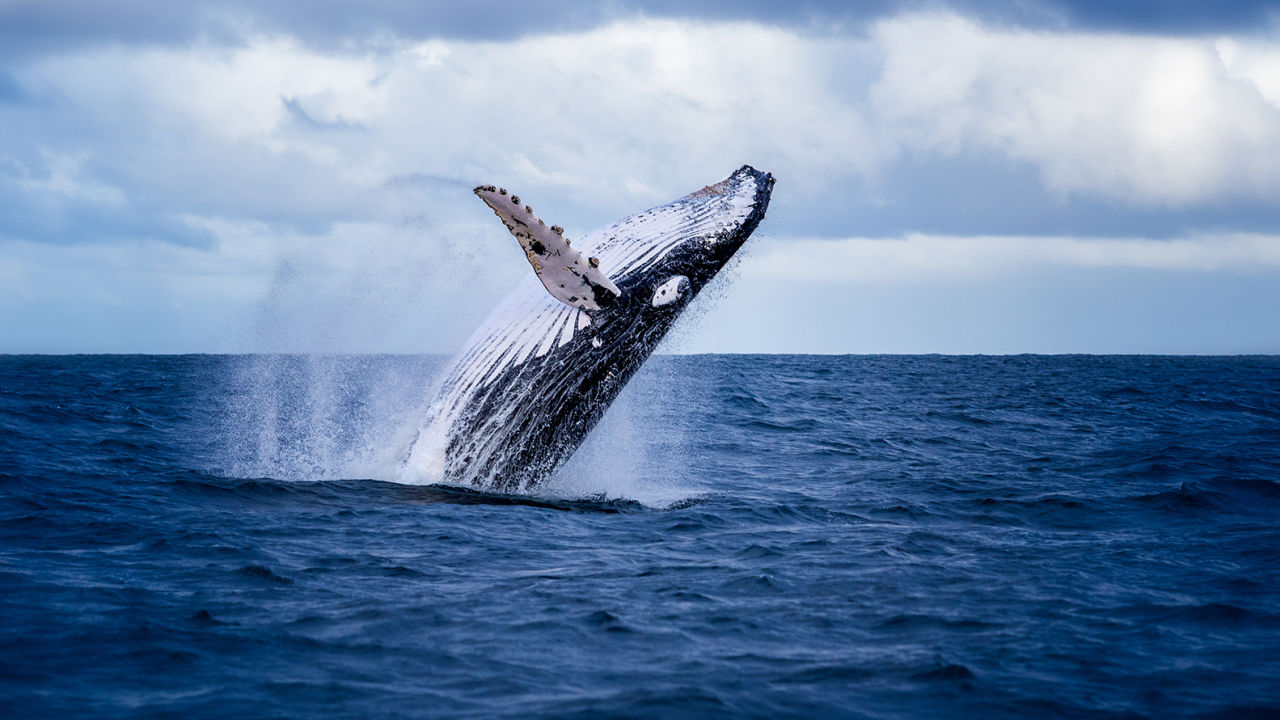
Each year, spectators flock to the coast of Australia in search of a puff of sea water, a dorsal fin or a diving tail. The lucky few are blessed to witness a full breach as a humpback whale crashes through the ocean surface before gravity pulls them down with an almighty slap.
The humpback whale migration is an awe-inspiring natural phenomenon to witness. So, why do these ocean giants endure a mammoth, and potentially perilous, swim from the food-rich waters of Antarctica to their warmer breeding and calving grounds in the Great Barrier Reef?
We take you through each stroke of their journey.
#Why do humpback whales leave their food-rich waters of Antarctica?
Antarctica’s waters are abundant with krill (small shrimp-like crustaceans) which serve as a vital food source for whales. As winter approaches in the Southern Hemisphere, the Antarctic krill population diminishes due to sunlight reduction and sea ice formation. Humpback whales rarely feed while migrating or during those long stints in tropical waters so their sustenance depends almost exclusivity on their blubber (fat reserves) obtained when feeding in the summer months of Antarctica.
Whales are highly attuned to environmental cues. This seasonal change and decline in food availability prompts whales to instinctively embark on their journey north. They possess an innate sense of navigation, following magnetic fields, ocean currents, and temperature gradients to return to the breeding area of their birth.

Humpback whales deep dive into Antarctic waters in search of krill. Credit: Playful Lens.
#How far do humpback whales traverse?
These majestic creatures showcase their incredible endurance traversing from Antarctica to Australia’s tropical waters of the Great Barrier Reef in a relatively short timeframe. A direct route will clock their swim at approximately 6,500 to 8,000 kilometres one way, but humpbacks don’t usually swim in a straight line and may detour over greater distances.
Various pods of humpback whales stagger their approach to the breeding grounds depending on their pace and motivations during migration. Juvenile humpback whales lead the journey with their youthful speed and their desire to gain a competitive advantage for feeding and mating opportunities. At the slower end of the spectrum, expectant mothers make a less hurried journey, some even giving birth on the way.
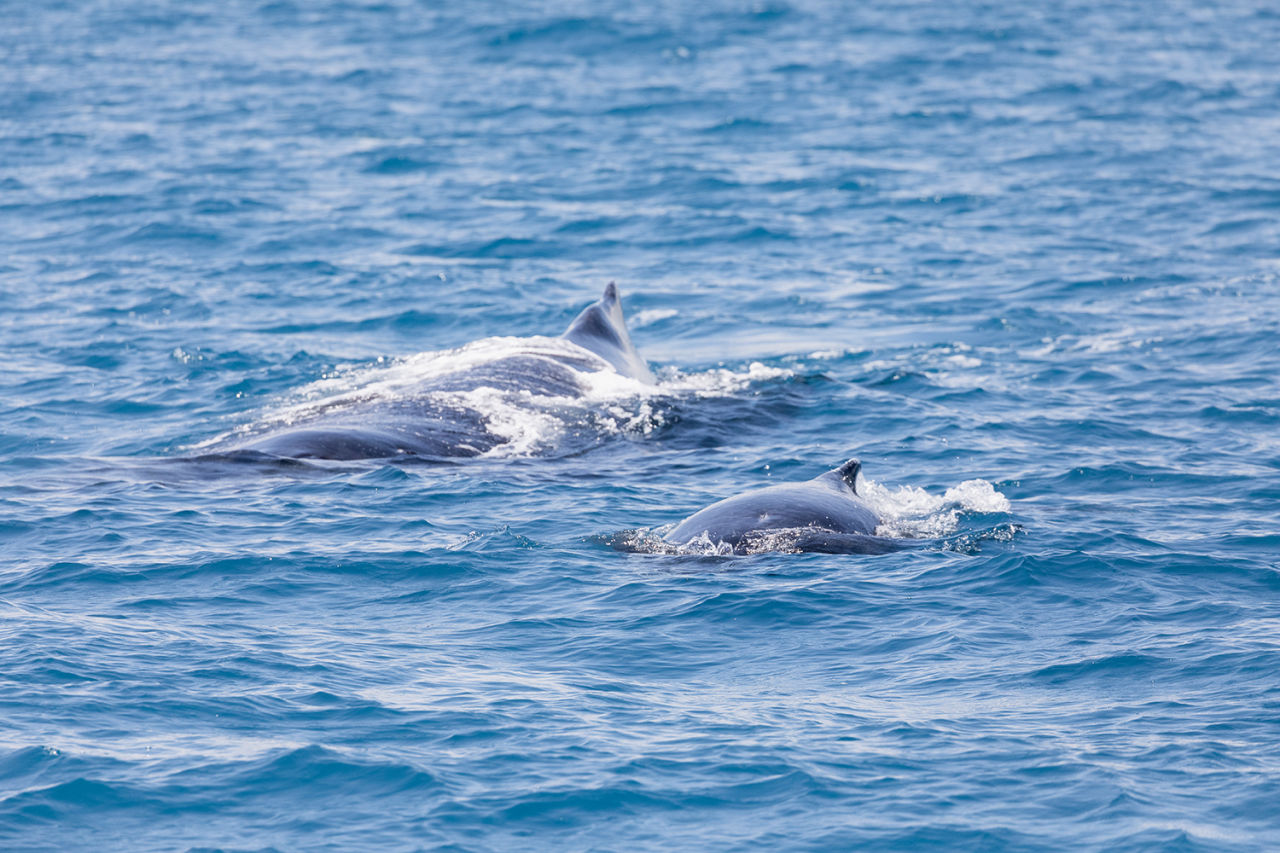
New mums and their calves take longer to arrive at their ocean nursery. Credit: Playful Lens.
#Why do whales breed in warmer waters?
Humpback whale calves are born relatively helpless and so Queensland’s warmer waters provide a more stable environment for them to feed, grow and learn. The warm and sheltered coastal areas offer relative protection for young calves to grow and learn to help support their survival on the maiden trip back to Antarctica.
Breeding grounds offer an opportunity for them to observe and learn important behaviours and communication skills. Humpback calves will interact with their mothers by brushing fins and whispering and mums have also been known to breach before young calves spend time mimicking the behaviour.
#Why do humpback whales breach?
A single breach demands a huge expenditure of energy for a humpback whale. As whales’ food stocks are limited in their migratory months, this physical exertion needs to be purposeful, strategic and impactful.
It is widely believed a humpback whale’s breach – as well as tail and fin slapping – is a display of courtship in an effort to attract a potential mate. Male whales will exhibit these impressive displays of strength and agility to establish dominance and secure their chances of a successful reproduction. Breaching is also considered a non-verbal way to convey their presence, location and intention over a long distance.
It is believed humpbacks will also breach to teach their young, as well as to dislodge barnacles and potentially remove parasites that create skin irritations.
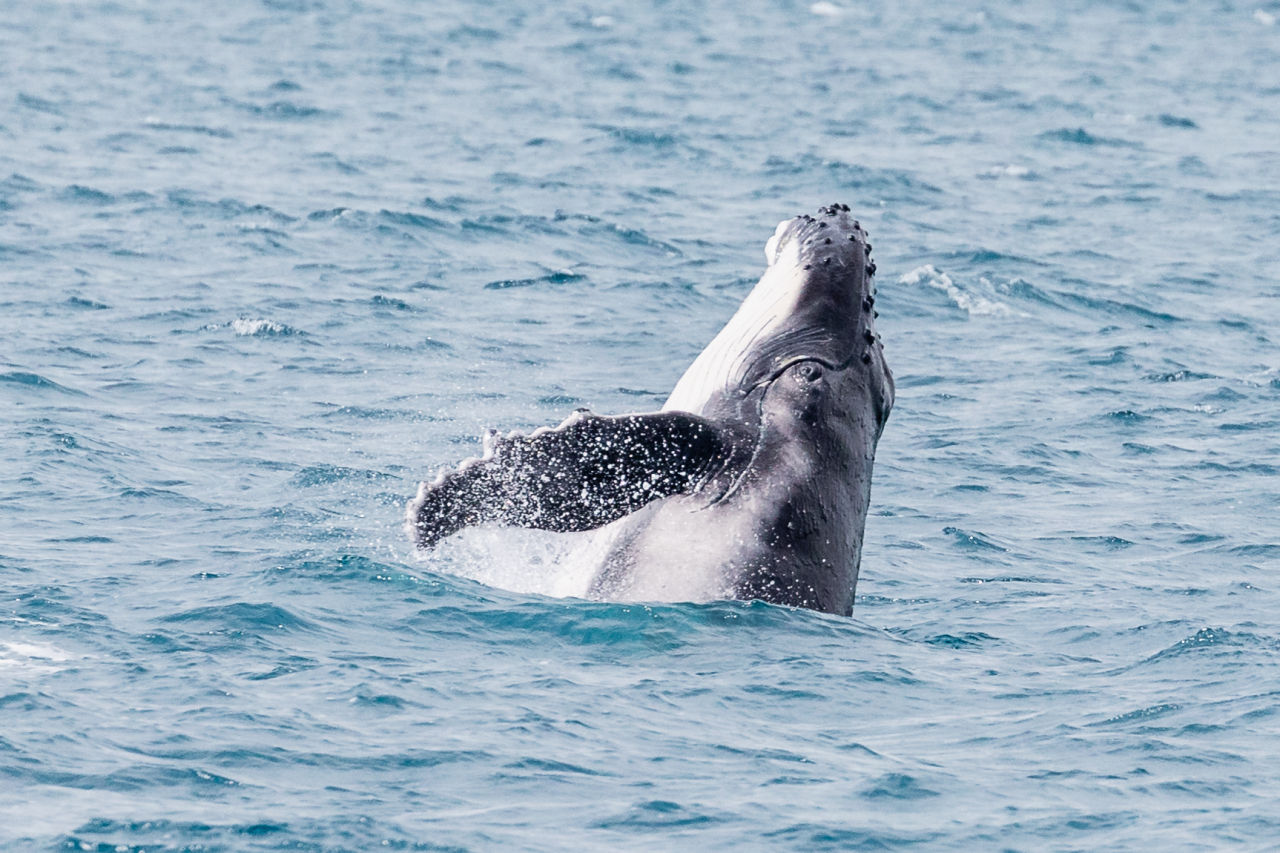
A baby humpback whale learning to breach. Credit: Playful Lens.
#How do whales survive the migration?
Each whale migration season poses challenges to their survival. Whales rely on their stored energy reserves to sustain themselves and the energy expenditure required to feed their calves. The consumption of food reserves is required for the whole journey including the long swim back to Antarctica and many whales risk starvation.
Young calves are also susceptible to predation by killer whales or sharks, as well as numerous other potential human hazards such a navigating through shipping lanes and fishing nets. For those whales that do survive the journey home, they return to feed on Antarctic krill, restoring their fat reserves to make the arduous journey again in the coming seasons.
Learn more about Humpback Whales.
#Related
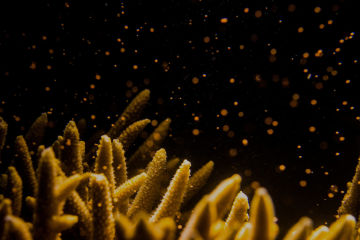
Explainers ·
What is coral spawning?

Explainers ·
Uncovering hidden species with eDNA

Explainers ·
What is biodiversity and why is it so important?
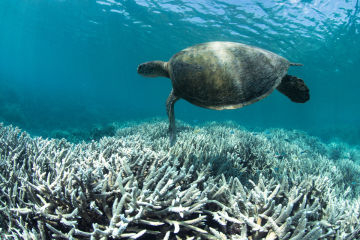
Explainers ·
